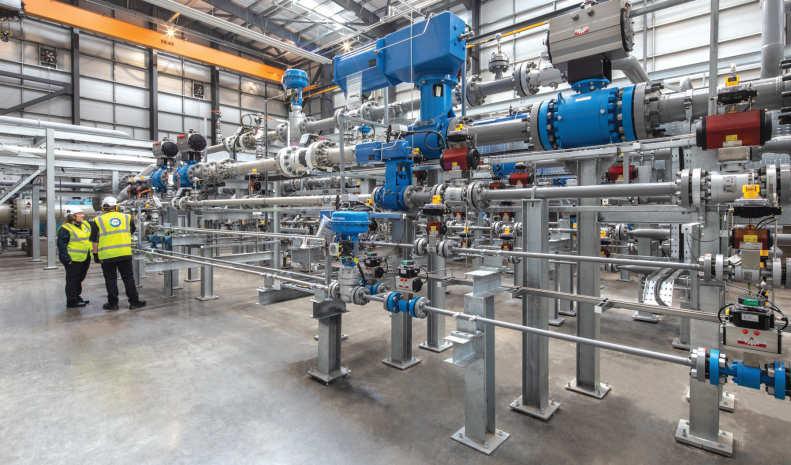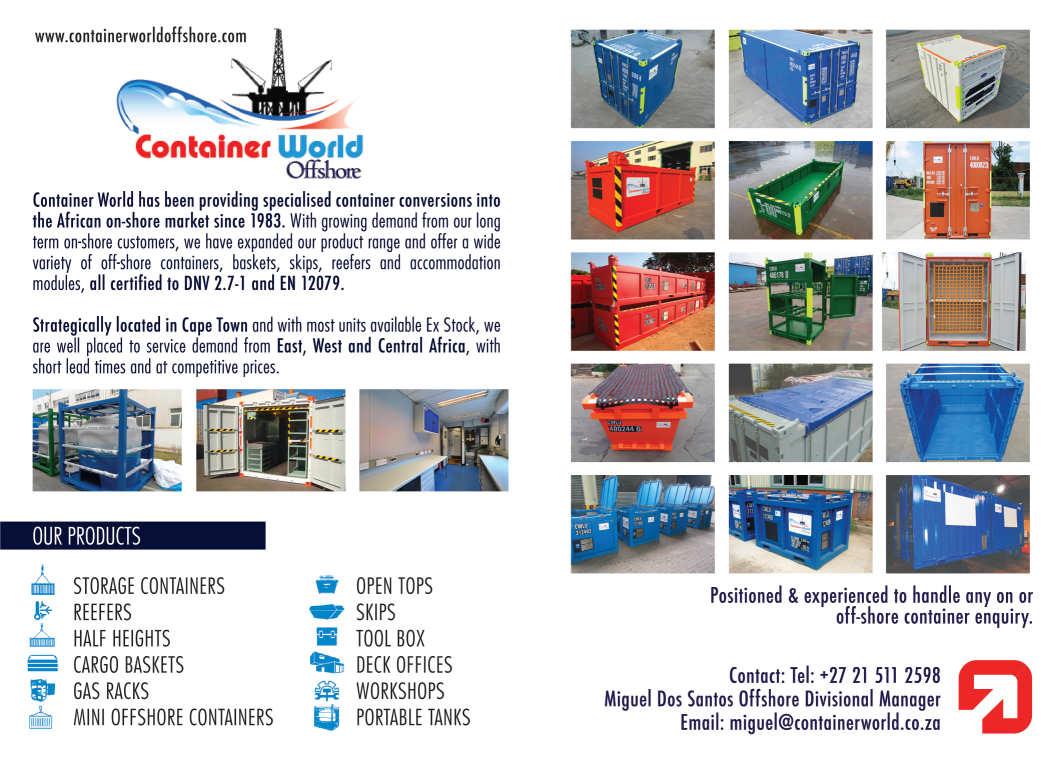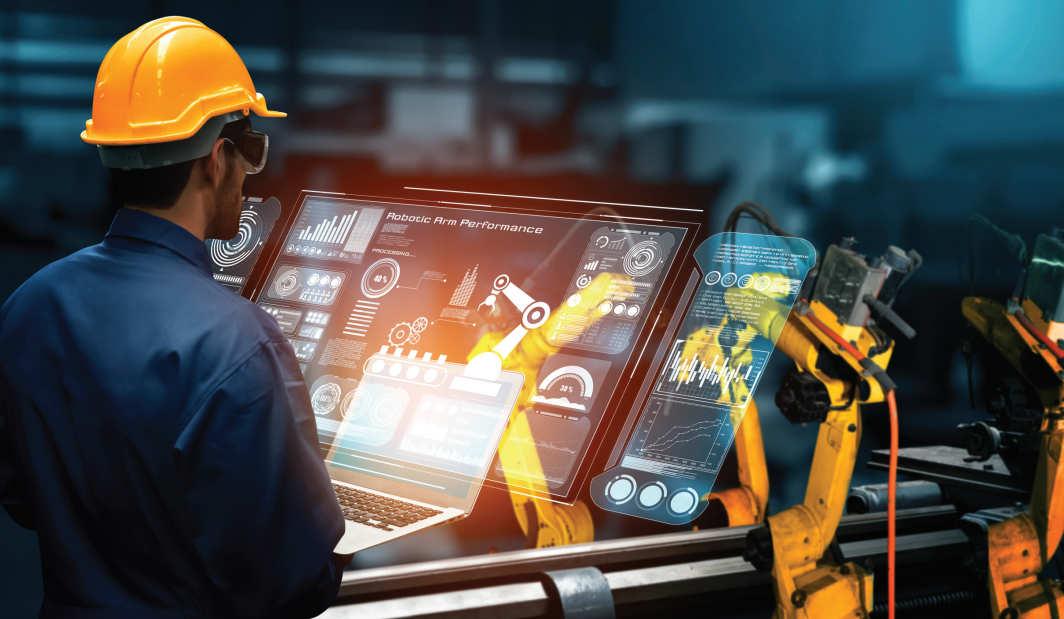
9 minute read
Flow measurement Enhancing the predictive power of condition-based monitoring systems
HARNESSING FLOW METER DATA
Behzad Nobakht, data scientist at TÜV SÜD National Engineering Laboratory, discusses how the predictive power of condition-based monitoring (CBM) systems can be enhanced, improving the efficiency and safety of operations throughout the flow measurement process.
WHILE THE OIL and gas sector enhances process control and safety, it also generates a deluge of complex data structures that engineers cannot manage and interpret quickly enough to avoid an unplanned event such as flow meter downtime. Production downtime has an adverse impact on productivity, leading to an overall reduction in business profits due to the reduction in units being produced and sold. To minimise loss of assets, petroleum enterprises need to reduce downtime, optimise operations and enhance maintenance strategies.
To interpret the vast amounts of data, data-driven models can utilise this information and deliver analytics solutions to allow businesses to reduce unplanned events. Data-driven solutions explore the impact of varying parameters in equipment such as temperature, pressure or even more device-specific digital diagnostic values on specific industrial conditions. These conditions may be indicative of a known fault or an unknown event. The models will extract this information to predict the future state of a system based on live and historical data. This process is known as conditionbased monitoring (CBM).
TÜV SÜD National Engineering Laboratory has proven that the efficiency and safety of operations throughout the entire flow measurement process can be improved using data-driven solutions. This includes process values verification, prediction and uncertainty quantification using live data. Through extensive R&D, the Digital Metrology team successfully developed an intelligent software-based solution that can process data streams in real-time, detect any likely deviations from normal behaviours, and alert the operators of causes of failure.
CBM systems have been developed to extract temporal and spatial information in data through deep neural networks (DNNs). The learned patterns (i.e. encoded information) were then related to historical system conditions to probabilistically predict the state of the system under uncertainty. The time associated with failure diagnosis during scheduled maintenance is also minimised, as a CBM system allows for remote examination. Consequently, CBM enables old meters and infrastructure to be operational for a longer period which, in turn, leads to the extension of Remaining Useful Life (RUL).
Many data-driven approaches exist to estimate the state of a meter or other equipment from sensor data for health monitoring applications such as anomaly detection, fault detection and RUL. However, many of these methods may lose accuracy when dealing with noisy sensor readings, due to the presence of high voltage machinery. Other challenges in exploiting sensor data include 'partial unavailability' of sensor data because of network communication loss and complex dependencies between sensors. Different conditions may have similar characteristics, making it challenging to build unique connections between raw sensor outputs and conditions. Given the complexities in inter-sensor relationships, time-dependent patterns and spatial correlations, it is hard to distinguish
TÜV SÜD’s flow meter test facilities.
discrepancies between these relationships.
To address CBM in real-world scenarios, we ran different experiments in our facilities. In one recent study, two identical Coriolis flow meters were exposed to various fault conditions. After a baselining calibration exercise, both meters were systematically exposed to fault conditions by intentionally installing them with a misalignment, inducing cavitation and operating at flow rates beyond the meter's full specification.
During these experiments, uninterrupted time-series data sets were generated, which included both facility reference instrumentation and digital meter diagnostic variables. Different classification models were then employed to learn facility and diagnostic variables to predict system conditions. The resulting models from this research performed considerably well in out-of-sample test predictions for real-world scenarios, and could offer tangible benefits to end-users.
The accuracy and versatility of the models can ultimately be improved by feeding it additional data that covers further scenarios likely to be encountered by flow meters in the field. The resulting data will be analysed and used to train the model to report meter performance issues in multiphase flow conditions. In addition, the facility will be used to recreate the conditions tested in previous experiments to observe and validate the model's transferability with respect to its reliability while in use in a new facility.
In summary, using standard instrumentation and diagnostic measurements, available to all end-users, combined with the support of experienced flow practitioners and meter manufacturers, can enhance the predictive power of CBM models. The predictive model can be tuned to reliably predict and highlight undesirable operating conditions specific to a given installation in a manner that non-data science experts easily understand. This also includes anomaly detection or highlighting potential problems in the system before equipment is damaged.
With condition-based calibration and predictive maintenance, oil and gas firms will adopt a more proactive approach to maintenance, meaning that facility downtime due to component failure will be reduced, and performance deterioration will be detected before the point of failure. Furthermore, a self-maintaining autonomous system will significantly reduce the ongoing costs of providing traceability to oil and gas business.
TÜV SÜD National Engineering Laboratory is a world-class provider of technical consultancy, research, testing and programme management services. Part of the TÜV SÜD Group, the organisation is also a global centre of excellence for flow measurement and fluid flow systems and is the UK’s Designated Institute for Flow Measurement. www.tuvsud.com/en-gb/nel

THE KEY TO UNLOCKING THE POWER OF DATA
Unlocking the power of data will be key to ensuring companies can maintain business continuity, drive operational resilience and benefit from emerging technologies, says Geir Engdahl, co-founder and chief technology officer, Cognite.
INSIDE NEARLY ANY type of business is a treasure trove of data. It is the companies that understand how to maximise the value of that data and use it to improve decision making, accelerate innovation, enhance the customer experience and drive operational efficiency that will have the competitive advantage. However, it is easier said than done, and companies may find extracting this data value to be challenging.
Siloed data, outdated tools and shadow IT are the most common hurdles faced by industrial businesses. These are the barriers that companies need to overcome if they aim to democratise data and analytics, streamline collaboration and accelerate timeto-insight. The global skills shortage represents another barrier, and it is clearly one that must be addressed if companies are to have access to the right talent pool to tap into that data. According to a DNV study, 91% of energy companies say digital skills training is needed in the oil and gas industry.
The energy industry is also facing an ageing workforce, with 43% of workers over age 50, according to the UK’s Department for Business & Energy Strategy. That makes the optimisation and contextualisation of data essential to ensure maintenance and operations teams have access to insights that might otherwise be lost as a critical part of the workforce enters retirement. This is yet another reason why driving business continuity and operational resilience through the power of industrial data is crucial.

A number of barriers need to be overcome in order to reap the full benefits of data.
Tackling proprietary data protocols
When looking at process-heavy industries, focusing on core operational technologies is key. Systems from multiple vendors, each paired with proprietary protocols, can lock down data, and these systems have an average lifespan of around 20 years. The impact of this mix of legacy kit, disparate control systems, noncompatible data models and communication interfaces can limit a company’s ability to collect and contextualise its data.
Cognite experienced this challenge first hand when it supported an oil and gas company that had 30 oil platforms with more than 300 wells. The operator lacked a unified overview of maintenance activities within and between all assets – ultimately a costly and ineffective way of working. As the data team coming in to fix this challenge, the Cognite focus was on ensuring that this business did not have too many disparate control systems using proprietary data models and communication. By bringing these systems together into a shared platform,
Industrial data empowers everyone who engages with it.

this oil and gas operator could consequently optimise scheduling, improve communication across organisational silos and make data-driven decisions.
Concentrating on user needs
The secret recipe for many successful companies is to maintain a laser focus on their users and on improving their operational efficiency, along with their ability to make rapid and higher confidence decisions. Data plays a role here, and the work to structure an organisation’s data can bring value to multiple users. The key is understanding how people interact with data across the operation and be aware of how the data needs to be presented to the various roles in the company. By maintaining a user-centric focus and having a solid foundation of scalable data, companies can accelerate time to value.
Across industrial operations there is also a major focus on data analytics to support optimised decision making and to enhance operational efficiencies. In the future, this could lead to the adoption of AI and machine learning to intercede in the operation of industrial facilities in complex use cases, such as where Distributed Energy Resources (localised energy generation) is deployed.
Environmental impact is also something increasingly important for users. One example of this is from another Cognite customer, Aker BP. This oil and gas company used machine learning smart monitoring systems to visualise all data relevant for troubleshooting water contamination and identify factors related to high oil-inwater concentrations. This helped the company decrease its time spent on mitigating actions, a savings equivalent to an annual revenue potential of US$6mn. So, concentrating on user needs not only helps to unlock the power of data, but also to drive operational resilience.
Using trusted data sources
but the analytics and applications that leverage this data will come from the end users, software providers and equipment manufacturers. When you have a trusted data source with common assets you have a very strong basis for using low code to develop inhouse applications, as well as AI to enhance decision accuracy. Given the current industrial landscape, as well as greater market requirements, such as data-intensive carbon reporting and business model disruption from digital technology adoption, companies that do not focus on data as a key asset will face a significant competitive disadvantage.
Fortunately, most companies realise that if they were starting operations today, given the tech we currently have available, their processes and teams would look very different relative to today’s teams and processes built around legacy technology. The businesses that can adjust their people and processes will have a first-mover advantage in this new data-driven era. Those that remain wedded to past investments will eventually have to shoulder twice the technology debt.
At this point in the industrial space, there is a lot of focus on analysis to support optimised decision making and making operations more efficient. In the future, there may be adoption of AI and machine learning to operate industrial facilities for more complex use cases such as smart city concepts. Unlocking the power of data will be key to ensuring companies can maintain business continuity, drive operational resilience and reap all the benefits they can from emerging technologies.









